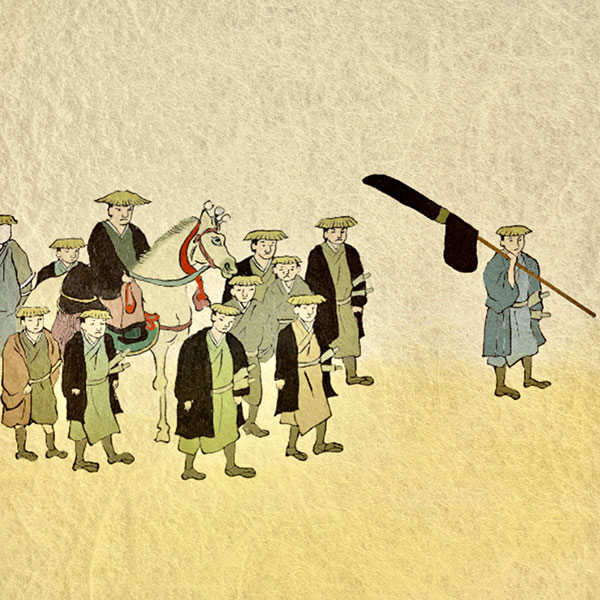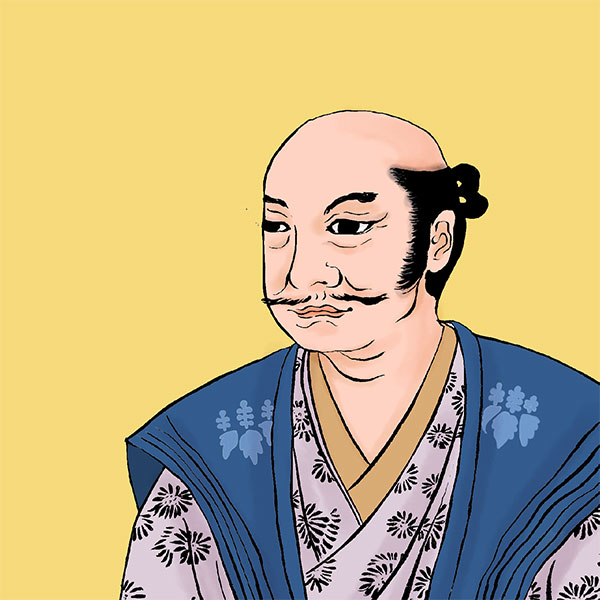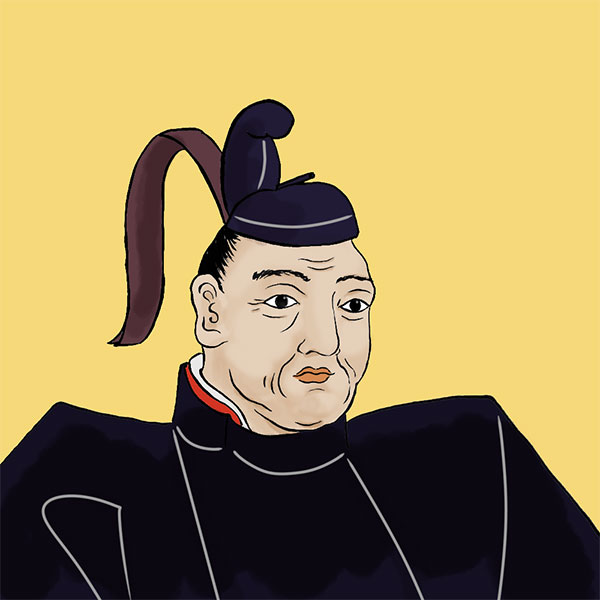Samurai laws (2/2)Edo period feudal lord control laws including the Genwa Rei

samurai laws
- Article category
- case file
- Incident name
- Samurai Laws (1615)
- place
- Tokyo
- Related castles

Edo castle
- people involved
During the Warring States period, the power of the Imperial Court gradually declined due to financial difficulties. Meanwhile, in 1609, a major scandal called the Inokuma Incident broke out. Noritoshi Inokuma, who was so handsome that he was said to be the ``return of Hikaru Genji,'' was involved in fornication and orgies with multiple women in the imperial court (including the emperor's mistress), involving court nobles.
Emperor Goyozei was furious and ordered those involved to be sentenced to death. At this time, Ieyasu intervened because people around him complained that the matter was ``too strict,'' and he wanted to leave the matter to a third party who could make a fair judgment. As a result of persuading the Emperor, Noritoshi, the main culprit, was beheaded, but the others involved were exiled. This incident became an example of the Shogunate overturning the Emperor's will and deciding on penalties, and it became an opportunity to change the relationship between the Shogunate and the Imperial Court from then on.
Now, regarding the contents of the important court noble laws, Articles 1 to 12 concern the Emperor and court nobles, and Articles 13 to 17 concern the priests and their appointments. Regarding the Emperor, Article 1 states, ``What the Emperor must acquire most is learning.'' In other words, it means that politics should be left to the shogunate. Furthermore, Article 7 states that the official ranks of samurai families should be separated from those of court nobles. As a result, samurai, unlike court nobles, had no fixed number of official positions, and the shogunate was free to recommend them to the imperial court.
Other contents concern the hierarchy of the Imperial Prince and each position, the rules for appointment of positions, the attire of the Emperor and court nobles, etc. By sorting out and stipulating matters that had previously been disputed in the Imperial Court, the rules for the Imperial Court and court nobles were re-formulated. I am.
Although it may seem like a one-sided imposition by the shogunate to take away political power from the Imperial Court and the nobles, Ieyasu exchanged opinions with the nobles many times before making the decision. As the Inokuma incident shows, the Imperial Court at the time was in a state of great turmoil, so Ieyasu took advantage of this opportunity to obtain the consent of the nobles, and skillfully make adjustments to make the content favorable to the shogunate.
Tokugawa Iemitsu's ``Kanei Rei'' made sankin-kotai compulsory.
With the exception of the seventh Tokugawa Ietsugu and the fifteenth Tokugawa Yoshinobu, samurai laws were re-promulgated each time the shogun changed hands, and their content changed little by little. Among them, there were some changes that could be considered milestones, such as the ``Kanei Rei'' issued by the third Tokugawa Iemitsu in 1635, which is known for explicitly stating and making it mandatory for Sankin rotation to take place in Edo. . It was drafted by Hayashi Razan, a famous Neo-Confucian scholar, and has 19 articles in total.
Sankin Kotai was a system in which feudal lords were sent to serve in Edo every other year. Each domain must cover the costs of travel and stay in Edo for the sankin rotation. Furthermore, it was necessary to have legal wives and children living in Edo, and the shogunate held important people from each domain as hostages. Through sankin katai, the shogunate aimed to strengthen its authority and weaken the daimyo.
Legally, Article 2 of the Kan'ei Rei states, ``Daimyo and small names are ordered to work alternately between their own territories and Edo. They are to attend the work in April every year.'' As the number of attendants is large, we ask them to reduce the number to an appropriate number in order to save money, but when they go to Kyoto, we try to maintain a size appropriate to their status.
In addition, a new clause was added to the Kan'ei Order stating that ``ships with a capacity of 500 koku or more must be stopped (confiscated and prohibited from being built).'' This was called the ``prohibition against building large ships,'' and it restricted the armament of each domain by prohibiting the ownership of large military ships that could carry 500 stone (some say this was also a target for commercial wars). The ban on building large ships was originally issued to the feudal lords of the western region in September 1609 in the name of the second shogun, Hidetada Tokugawa. Later, in 1638, it was clarified that the restrictions were limited to military ships and merchant ships were excluded.
In addition, the Kane'ei Rei made the contents of the Genwa Rei more detailed. For example, in addition to prohibiting the construction of new castles, ``If the moat, earthworks, stone walls, etc. of your castle are broken, please contact the magistrate's office and receive instructions.The turrets, walls, gates, etc. must be repaired as before.'' ”. In addition, at the end, he emphasizes the importance of obeying the law by saying, ``Follow all laws and regulations of the shogunate and comply with them everywhere.''
Tokugawa Ietsuna's ``Kanbun Rei'' measures against Christianity
Next, we will introduce the 21-article "Kanbun Rei" issued by the fourth shogun, Tokugawa Ietsuna, in 1663. What is noteworthy about these samurai laws is the ``prohibition of Christianity.'' After the previous Kane'ei Rei was issued, the Shimabara Rebellion broke out in October 1637, and in 1639, the Fifth National Isolation Order was issued, restricting Christianity. Portuguese trade ships that were proselytizing were prohibited from visiting the port. It is presumed that against this background, he joined the Kanbun Rei.
Tokugawa Tsunayoshi's ``Tenwa Rei'' is a law with a literary style, and its scope has also been expanded.
The fifth shogun, Tsunayoshi Tokugawa, promulgated samurai laws in 1683, but they were significantly revised. It consists of 15 articles, which have been shortened by combining the articles of previous samurai laws. Also, at this time, the laws issued in 1635 for gokenin and hatamoto, ``Shoshi Hodo,'' were integrated, and the samurai laws became laws not only for daimyo, but also for gokenin and hatamoto. .
Around Tsunayoshi's time, the shogunate system was in place and a peaceful world had arrived. The form of politics also changed from the previous military politics based on military force to a ``literary politics'' based on law, scholarship, and Confucianism (Shushigaku). This influence is clearly reflected in the Tenwa Rei.
First, Article 1, which had not been changed until now, ``Dedicate yourself to the path of literature, martial arts, archery, and horseback riding,'' has been amended to ``Encourage literary, martial arts, and filial piety and maintain good manners.'' Bunmu Tadakata refers to learning, martial arts, loyalty, and filial piety. The influence of Neo-Confucianism can be seen here. In Article 3, it is written that ``humans, horses, and weapons'' should be properly prepared, and it is clear that in a world of peace, academic ability and Confucian morality should be valued more than military force.
In addition, due to the influx from the Shogun Law, adopted children must basically have the same surname, and ``terminally adopted children'' who are adopted after death are subject to ``examination.'' Initially, the shogunate prohibited adoptions at the end of life for reasons such as preventing takeovers and reducing the power of the daimyo (if there was no heir, the daimyo family could be destroyed), but as the shogunate system was established, the restrictions were gradually relaxed. The Tenwa Rei is one part of this. This was because if a daimyo family became extinct due to a lack of successors, their vassals would become ronin, leading to deterioration of public order and political instability. This was a measure to ensure a peaceful reign.
In addition, the Tenwa Rei also includes a ``prohibition of martyrdom.'' It is said that by prohibiting suicide following the feudal lord's footsteps, he prevented a shortage of capable human resources.
Later samurai laws
After that, the sixth shogun, Tokugawa Ienobu, issued the ``Hoei Rei'' in 1710. It was drafted by Arai Shiraishi, and has undergone major revisions based on Confucian thought. During the era of Ienobu and the next generation of Ietsugu, Bunji politics further advanced under the Neo-Confucian scholar Shiraishi. In addition to abolishing the edict of compassion for living creatures, Shiroishi also implemented fairly bold policy changes (the Seitoku no Chi), such as reminting coins and restricting the amount of trade with foreign countries, and the Hoei Rei was greatly influenced by these changes. Masu. In addition to largely reflecting Confucian ideas, it included a clause prohibiting bribery of officials.
Shiraishi carried out drastic reforms aimed at recovering the shogunate from its financial difficulties, but the reforms were too rapid and met with great opposition from the shogun's retainers. Then, during the era of Tokugawa Yoshimune, the 8th shogun, Yoshimune denied reform, and Shiraishi stalled. The reign of Seitoku is coming to an end.
The samurai laws issued by Tokugawa Yoshimune were known as the Kyoho Rei. Yoshimune abolished Shiroishi's ``Hoei-ryo'' and returned it to the Tenwa-ryo, and added the following sentence: ``This has been embellished over generations of our family, so there is no place to revise it.''
After that, samurai laws remained in the Kyoho Rei (actually the Tenwa Rei) with almost no revisions, and continued to be followed until the end of the Edo period.
Reread the article on samurai laws
- people involved

- WriterNaoko Kurimoto(Writer)I am a former travel industry magazine reporter. I have loved history, both Japanese and world history, since I was a child. I usually enjoy visiting temples and shrines, especially shrines, and often do ``pilgrimages to sacred places'' themed around historical figures. My favorite military commander is Ishida Mitsunari, my favorite castle is Kumamoto Castle, and my favorite castle ruins is Hagi Castle. My heart flutters when I see the ruins of battle castles and the stone walls of castle ruins.






